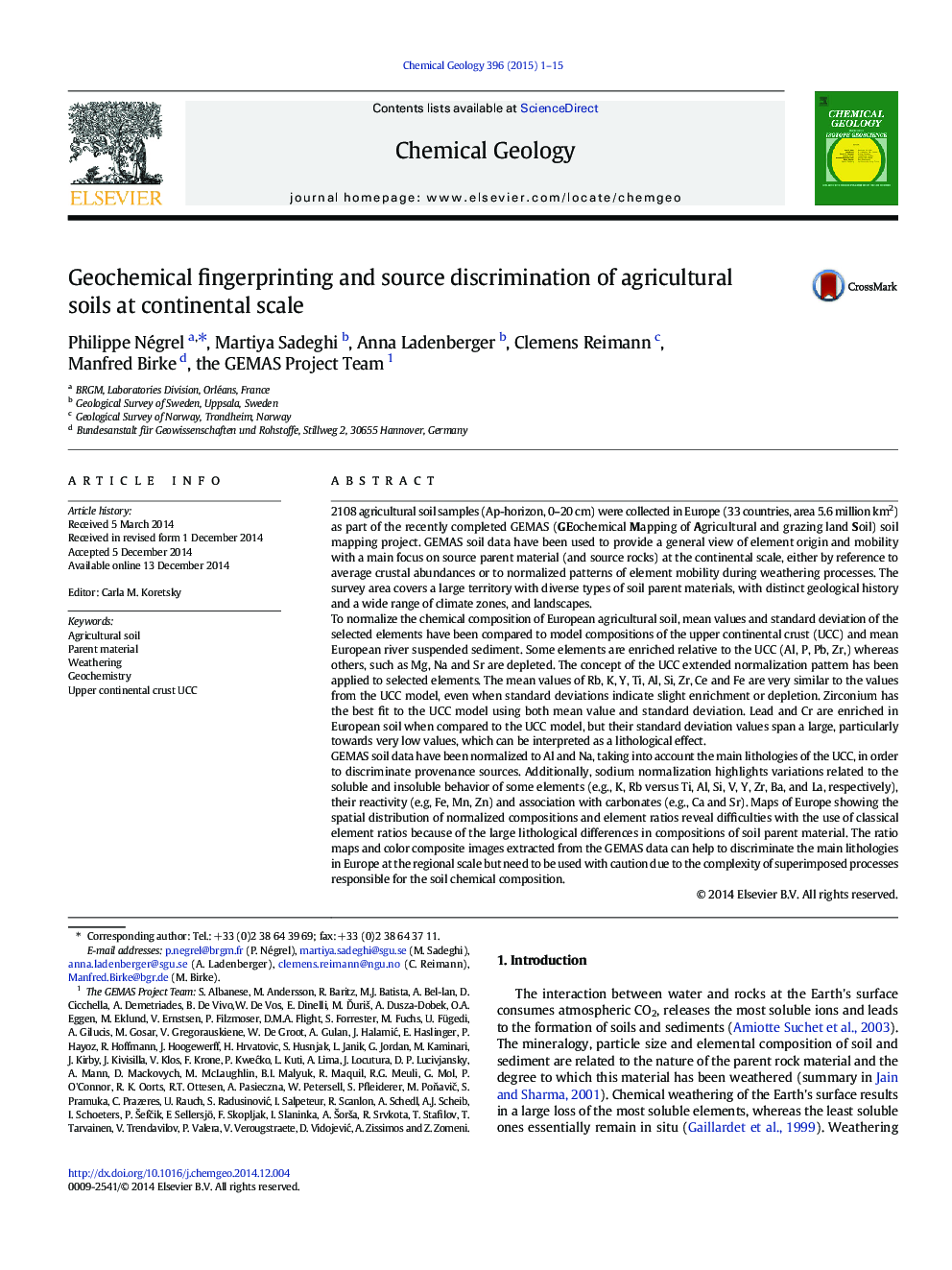| کد مقاله | کد نشریه | سال انتشار | مقاله انگلیسی | نسخه تمام متن |
|---|---|---|---|---|
| 6436497 | 1637577 | 2015 | 15 صفحه PDF | دانلود رایگان |
- Major and trace elements composition of European soils
- Agricultural soil dataset of Europe allows studying the large scale variations.
- Comparison with the Upper Continental Crust reveals enrichment and depletion in soils.
- Variation of parent material induces problems for maps of normalized composition.
2108 agricultural soil samples (Ap-horizon, 0-20Â cm) were collected in Europe (33 countries, area 5.6 million km2) as part of the recently completed GEMAS (GEochemical Mapping of Agricultural and grazing land Soil) soil mapping project. GEMAS soil data have been used to provide a general view of element origin and mobility with a main focus on source parent material (and source rocks) at the continental scale, either by reference to average crustal abundances or to normalized patterns of element mobility during weathering processes. The survey area covers a large territory with diverse types of soil parent materials, with distinct geological history and a wide range of climate zones, and landscapes.To normalize the chemical composition of European agricultural soil, mean values and standard deviation of the selected elements have been compared to model compositions of the upper continental crust (UCC) and mean European river suspended sediment. Some elements are enriched relative to the UCC (Al, P, Pb, Zr,) whereas others, such as Mg, Na and Sr are depleted. The concept of the UCC extended normalization pattern has been applied to selected elements. The mean values of Rb, K, Y, Ti, Al, Si, Zr, Ce and Fe are very similar to the values from the UCC model, even when standard deviations indicate slight enrichment or depletion. Zirconium has the best fit to the UCC model using both mean value and standard deviation. Lead and Cr are enriched in European soil when compared to the UCC model, but their standard deviation values span a large, particularly towards very low values, which can be interpreted as a lithological effect.GEMAS soil data have been normalized to Al and Na, taking into account the main lithologies of the UCC, in order to discriminate provenance sources. Additionally, sodium normalization highlights variations related to the soluble and insoluble behavior of some elements (e.g., K, Rb versus Ti, Al, Si, V, Y, Zr, Ba, and La, respectively), their reactivity (e.g, Fe, Mn, Zn) and association with carbonates (e.g., Ca and Sr). Maps of Europe showing the spatial distribution of normalized compositions and element ratios reveal difficulties with the use of classical element ratios because of the large lithological differences in compositions of soil parent material. The ratio maps and color composite images extracted from the GEMAS data can help to discriminate the main lithologies in Europe at the regional scale but need to be used with caution due to the complexity of superimposed processes responsible for the soil chemical composition.
Journal: Chemical Geology - Volume 396, 9 March 2015, Pages 1-15
